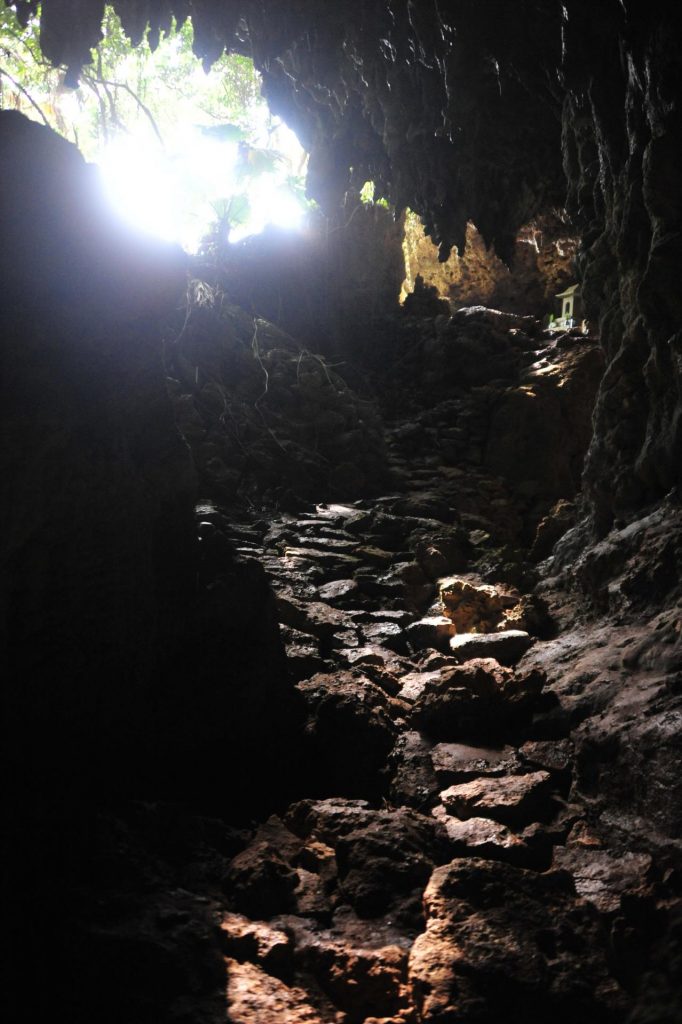A pleasantly cool breeze, the sound of transparent water flowing by, outside the strong rays of a hot sun beat down. Moving further and further back into a limestone cave, looking for treasure…
This is Takara-jima, Treasure Island. The name of the island really is Treasure.

I don’t want to give away the exact location, but it’s between Kyushu and Okinawa, a small island formed by an elevated coral reef that is home to about 150 people. Along the beach is a thick growth of pandanus palms and other tropical and sub-tropical plants, with the deep blue of the ocean and the white of the coral a magnificent contrast of color.
The reason I don’t want to give too much information goes back to May 23, 1701. On that date in Scotland, just as he was about to be executed, the famous pirate Capt. Kidd shouted, “I have hidden treasure,” but the executioner paid no attention and carried out the sentence without hearing Kidd’s explanation.
More than 200 years later, in 1937, some confidential information arrived in Japan in a letter from the U.S. According to Kidd’s log, the letter said, he had buried some treasure taken in the South China Sea in the Nansei Islands. The description of the location of the treasure was in a depression known as Shi-no-Tani (Death Valley), in a place where an active volcano continuously spews poisonous gas.
On the east side of Takara-jima is a place just like this, called Kyogamine. There are any number of limestone caves here—ideal hiding places. Many, many treasure hunters have come to this spot but, as yet, no treasure has been found.
That hunt for treasure stirred my interest, as did the story of the pirate who hid the treasure. Of course, stealing things from other people isn’t a good thing, but the image of using the wind alone to sail around the world is an enchanting one. Today we still use the wind to get to the same island.
Pirates have existed all over the world as long as people have traveled the seas, of course, but pirates are especially synonymous with the 17th and 18th centuries, and the Spanish-held areas of the Caribbean. They were outlaws, but they also had rules, such as no violence done to children or old people was tolerated.
In a feudal age, they also showed a level of equality and democracy unusual for the times—no wonder many of the sailors they captured also turned pirate. With these kinds of epic stories, it’s no wonder pirate stories and movies remain popular even today.
“Age shio ja; age shio ja”—that old Japanese saying meaning a rising tide and a good turn of events. When I visited this island, it wasn’t in search of treasure, but of sea turtles. Lately I’ve been photographing sea turtles, and I came to the island to look for—and found—the footprints of turtles that had come on land to lay their eggs.
So, for me, this was an island where I really did find a rising tide and a bit of treasure. Is there a connection between sea turtles and pirates? Well, remember Tortuga, or “turtle,” Island in the Caribbean, a place that was a base for many pirates.
One more thing—treasure hunting has its dangers; if you decide to go look for the treasure yourself, watch out for the Tokara habu snakes.





